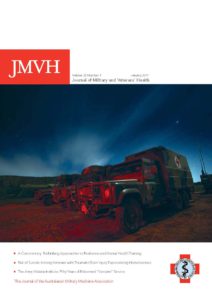Occupational and environmental health in the ADF
Commander Neil Westphalen Introduction ADF personnel are arguably exposed to the most diverse range of occupational and environmental hazards of any Australian workforce. Controlling these hazards is complicated not only by the number, size and complexity of ADF workplaces but also by its workforce demographics. ADF workplace hazards significantly impact the physical and mental health of current and ex-serving personnel. High rates of preventable… Read more »




 Download the whole edition here.
Download the whole edition here.


